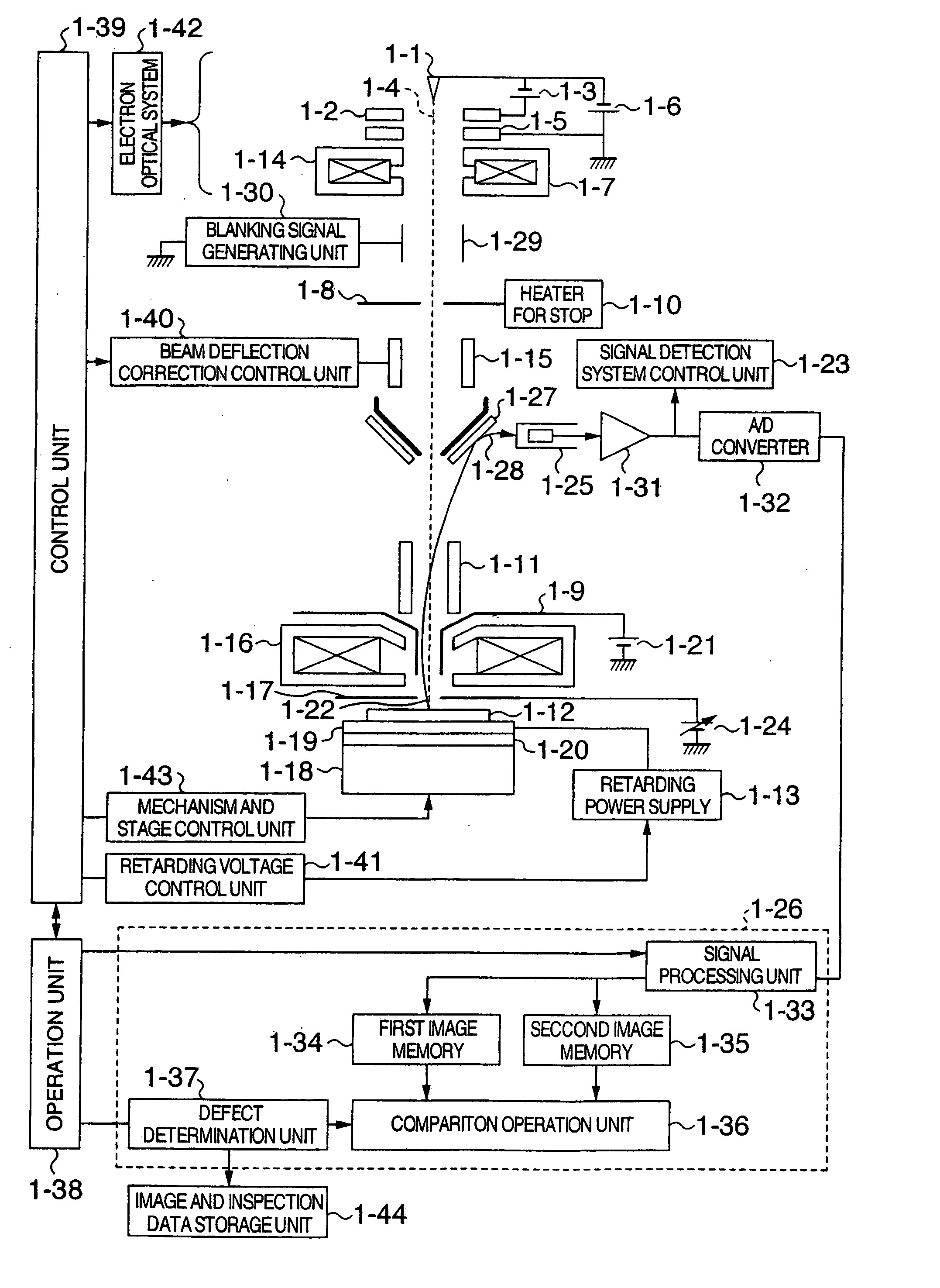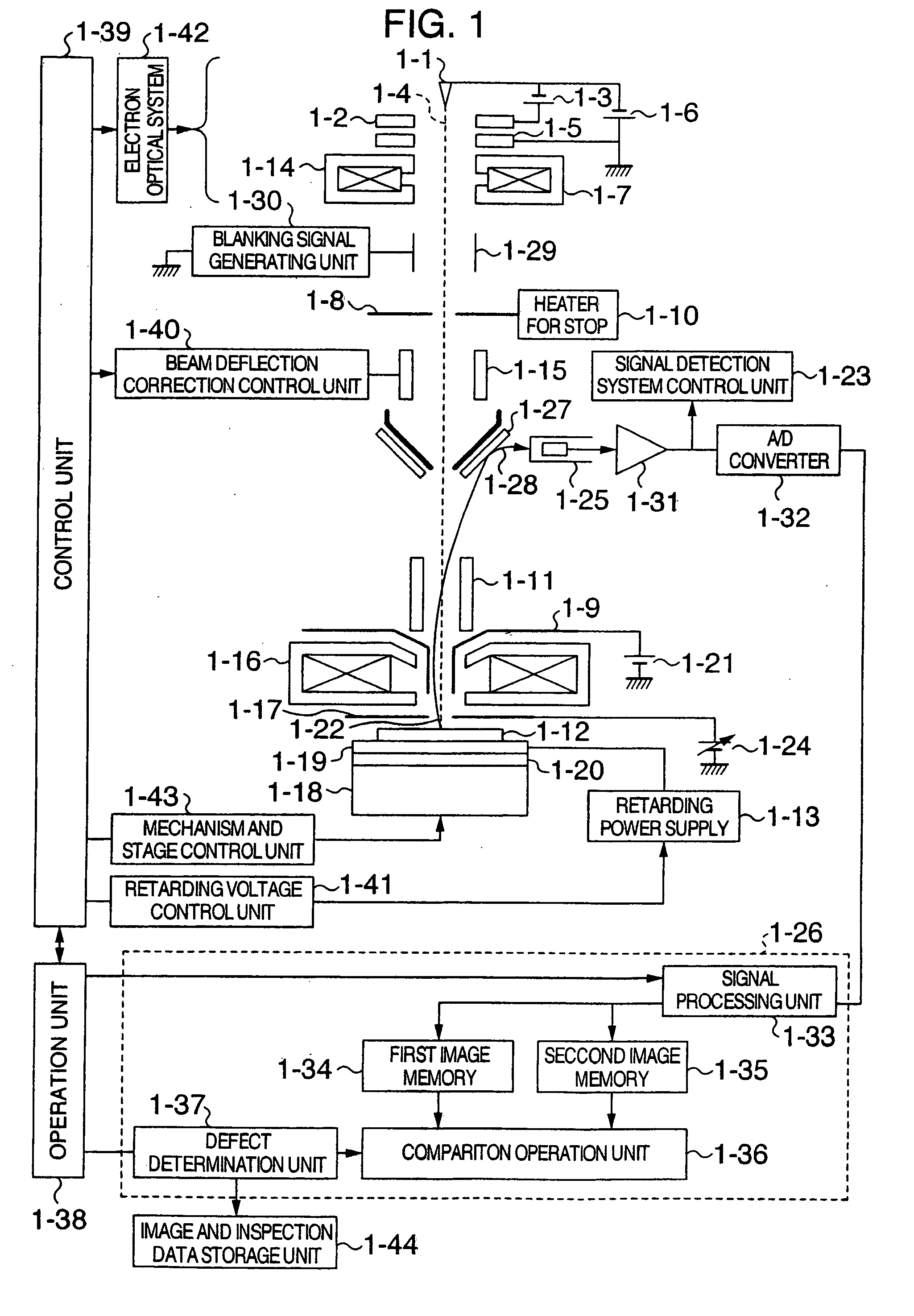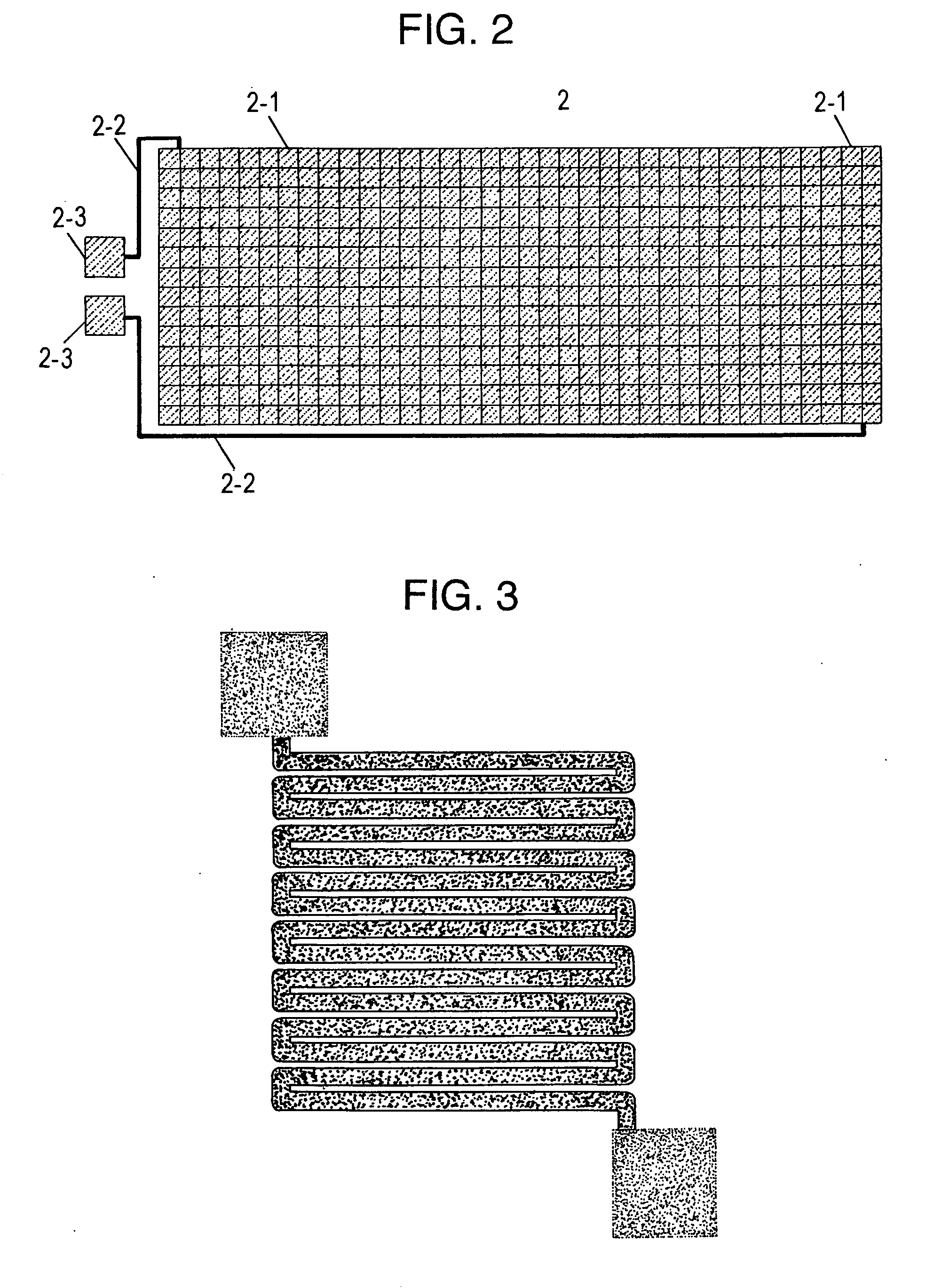Method and apparatus for inspecting patterns
a pattern and pattern technology, applied in the field of inspection technology, can solve the problems of affecting the yield of semiconductor devices, affecting the accuracy of electron beam image magnification, and difficulty in optical image detection, etc., and achieves high efficiency, high accuracy, and optimal inspection conditions.
- Summary
- Abstract
- Description
- Claims
- Application Information
AI Technical Summary
Benefits of technology
Problems solved by technology
Method used
Image
Examples
Embodiment Construction
[0047] A technology of inspecting patterns according to an embodiment of the present invention will be described in detail with reference to drawings by taking inspection of a circuit pattern on a semiconductor device as an example.
[0048] First, before the embodiment of the present invention is described, the principle underlying the technology of inspecting the semiconductor device according to the present invention will be described in detail. The technology of inspecting presence or absence of a defect in a pattern such as the circuit pattern of the circuit having a structure floated from a substrate using an electron beam will be described, taking the circuit pattern of the semiconductor device formed on a wafer as an example.
[0049]FIG. 1 is a diagram showing an example of a configuration of an apparatus for inspecting the circuit pattern according to an embodiment of the present invention. The apparatus for inspecting the circuit pattern in this embodiment is roughly constitu...
PUM
 Login to View More
Login to View More Abstract
Description
Claims
Application Information
 Login to View More
Login to View More - R&D
- Intellectual Property
- Life Sciences
- Materials
- Tech Scout
- Unparalleled Data Quality
- Higher Quality Content
- 60% Fewer Hallucinations
Browse by: Latest US Patents, China's latest patents, Technical Efficacy Thesaurus, Application Domain, Technology Topic, Popular Technical Reports.
© 2025 PatSnap. All rights reserved.Legal|Privacy policy|Modern Slavery Act Transparency Statement|Sitemap|About US| Contact US: help@patsnap.com



